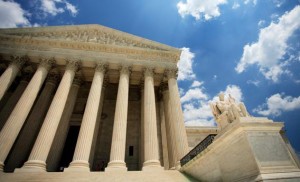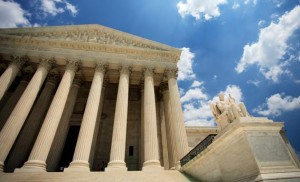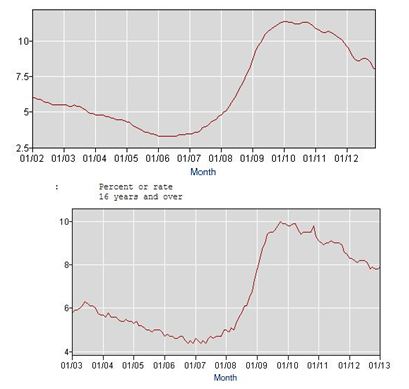 Since Dzhokhar Tsarnaev was taken into custody just over a week ago, the hue and cry in the public and media discussion has centered on “Miranda” rights and to what extent the “public safety exception” thereto should come into play. That discussion has been almost uniformly wrongheaded. I will return to this shortly, but for now wish to point out something that appears to have mostly escaped notice of the media and legal commentariat – Tsarnaev repeatedly tried to invoke his right to counsel.
Since Dzhokhar Tsarnaev was taken into custody just over a week ago, the hue and cry in the public and media discussion has centered on “Miranda” rights and to what extent the “public safety exception” thereto should come into play. That discussion has been almost uniformly wrongheaded. I will return to this shortly, but for now wish to point out something that appears to have mostly escaped notice of the media and legal commentariat – Tsarnaev repeatedly tried to invoke his right to counsel.
Tucked in the body of this Los Angeles Times report is the startling revelation of Tsarnaev’s attempt to invoke:
A senior congressional aide said Tsarnaev had asked several times for a lawyer, but that request was ignored since he was being questioned under the public safety exemption to the Miranda rule. The exemption allows defendants to be questioned about imminent threats, such as whether other plots are in the works or other plotters are on the loose.
Assuming the accuracy of this report, the news of Tsarnaev repeatedly attempting to invoke right to counsel is critically important because now not only is the 5th Amendment right to silence in play, but so too is the right to counsel under both the 5th and 6th Amendments. While the two rights are commonly, and mistakenly, thought of as one in the same due to the conflation in the language of the Miranda warnings, they are actually somewhat distinct rights and principles. In fact, there is no explicit right to counsel set out in the Fifth at all, it is a creature of implication manufactured by the Supreme Court, while the Sixth Amendment does have an explicit right to counsel, but it putatively only attaches after charging, and is charge specific. Both are critical to consideration of the Tsarnaev case; what follows is a long, but necessary, discussion of why.
In fact, “Miranda rights” is a term that is somewhat of a misnomer, the “rights” are inherent in the Constitution and cannot be granted or withheld via utterance of the classic words heard every day on reruns of Law & Order on television. Those words are an advisory of that which suspects already possess – a warning to them, albeit a critical one.
In addition to being merely an advisory of rights already possessed, and contrary to popular belief, advising suspects of Miranda rarely shuts them down from talking (that, far more often, as will be discussed below, comes from the interjection of counsel into the equation). As Dr. Richard Leo has studied, and stated, the impact of Miranda on suspects’ willingness to talk to interrogators is far less than commonly believed. One study has the effect rate of Miranda warnings on willingness to talk at 16%; from my two plus decades of experience in criminal defense, I would be shocked if it is really even that high.
On top of this fact, the Miranda warnings relate only to the admissibility of evidence or, rather, the inadmissibility – the exclusion – of evidence if it is taken in violation of Miranda. Professor Orin Kerr gives a great explanation here.
Since there is, without any real question, more than sufficient evidence to convict Tsarnaev without the need for admissibility of any verbal confession or other communicative evidence he may have provided the members of the HIG (High Value Detainee Interrogation Group), the real question was never “Miranda” but when Tsarnaev would be presented to the court which, in turn, would determine when he would be given access to counsel. Not surprisingly, one of the first people I saw to correctly point this out was Marcy Wheeler:
Folks: FAR more important, IMO, than Miranda is presentment. If he sees a judge in 2 days she’ll make sure he gets a lawyer.
That could not have been more true, as was demonstrated on Monday morning, April 22, when Magistrate Judge Marianne Bowler went to the Beth Israel Deconess Medical Center where Tsarnaev was receiving treatment in custody. Also present was William Fick and Miriam Conrad (fascinating look at Conrad and her history here) of the Federal Public Defender’s office in Boston. Fick, who speaks fluent Russian, and Conrad met with Tsarnaev immediately before the formal initial appearance process and represented him in the brief actual initial appearance itself.
So, all is as it should be because Tsarnaev got the initial appearance he was entitled to by law, right? No.
First off, there is the timing of the initial appearance, sometimes also colloquially referred to as “presentment”. The initial appearance is governed by Rule 5 of the Federal Rules of Criminal Procedure (FRCrP). While you may have seen mention of “within 48 hours”, the rule itself provides only that an arrested person must be taken before a magistrate “without unnecessary delay”. The “48 hours” standard for first court appearances comes from the 1991 case of County of Riverside v. McLaughlin, which held that 48 hours was the outside limit. The importance of the Rule 5 initial appearance was cemented by the Supreme Court as recently as 2009 in the case of Corley v. United States (which even suggests delays longer than six hours may be presumptively violative).
But the 48 hour limit was not honored, in either spirit or letter, by the federal authorities in charge of the detention and interrogation of Dzhokhar Tsarnaev. The formal taking into custody of Tsarnaev, the arrest, was effected and announced at 8:45 pm EST Friday night April 19 and, as evidenced by the complaint cover sheet filed with the court, Tsarnaev was immediately in federal custody. The criminal complaint signifying the formal charging of Tsarnaev is noted by Judge Bowler to have been sworn out to her at 6:47 pm on Sunday, April 21. So, Tsarnaev was charged within 48 hours of his arrest, but he was not given his initial appearance within 48 hours, as required by Rule 5 FRCrP, County of Riverside v. McLaughlin and Corley.
The Rule 5 initial appearance was finally given to Dzhokhar Tsarnaev Monday morning April 22, as evidenced by the official transcript of the proceeding. The specific sequence and timing of these events is critical because of the nature and timing of the interrogation of Tsarnaev prior to him being advised of his Miranda warnings by Judge Bowler. It appears as if there were two substantive interrogation sessions by the HIG team, a fact reported by no less than Ray Kelly, based upon claimed briefing by the federal authorities:
The police commissioner explained that was the original story that Dzhokhar told police when they began to interrogate him in the hospital, but that he later provided a more detailed account during a subsequent interview.
Both interviews appear to have happened before authorities read the younger Tsarnaev brother his Miranda rights on Monday. According to Kelly, Dzhokhar was interrogated twice by authorities in the hospital, the first time on “Saturday evening into Sunday morning” and the second on “Sunday evening into Monday morning.” According to an Associated Press report from earlier today, the questioning lasted a total of 16 hours before Dzhokhar stopped cooperating upon being informed of his right to remain silent.
Remember, however, from above, that “Tsarnaev had asked several times for a lawyer, but that request was ignored since he was being questioned under the public safety exemption to the Miranda rule”. This is where the Miranda, the public safety exception and right to counsel all intersect for Mr. Tsarnaev. Frankly, the government has issues on all of those fronts, but let us first look at the one that has been most discussed, and cowardly demagogued by the likes of House Intel Chairman Mike Rogers and NY Congressman Peter King, the most – Miranda and the “public safety exception”.
Professor Erwin Chemerinsky, in the Los Angeles Times, explains the nuts and bolts of the “exception”, and why it arguably does not apply to Tsarnaev’s situation:
Holder said on the Sunday talk shows that the government intended to invoke the “public safety exception” that allows suspects to be questioned without being given Miranda warnings in emergency circumstances. But this exception does not apply here because there was no emergency threat facing law enforcement.
The emergency exception to Miranda that Holder embraced was announced by the Supreme Court in New York vs. Quarles in 1984. A woman told the police that she had been raped by a man with a gun. When the police caught the suspect in a grocery store, they saw an empty holster and no gun. The man was asked about the location of the gun, and he told the officer where to find it.
The Supreme Court ruled that, although the suspect had not yet been given Miranda warnings, the statement about the gun was admissible against him because of the urgent need to find the gun. In other words, the public safety exception applies only when police are acting in an emergency to prevent serious immediate harm. If the police needed to question Tsarnaev as to the location of other bombs, the emergency exception would apply.
The New York v. Quarles case Chemerinsky discusses as setting out the public safety exception can be found here. In light of the fact that not only had multiple voices, from Attorney General Holder, to President Obama, to a myriad of investigation authorities, both local and federal, stated there was no evidence of further threat, there is some merit to Professor Chemerinsky’s opinion on the Quarles exception not being applicable to Tsarnaev by the time his interrogation commenced on Saturday April 20.
Of course, the DOJ did not rely on Quarles alone, they also invoked their now infamous “”Public Safety Exception Memo” first incarnated in a memo from Attorney General Holder dated October 19, 2010, and formally distributed in a cleaned up version dated October 21, 2010. The memo goes beyond the basic immediate public safety questions permitted by Quarles to allow further broader ranging questions:
There may be exceptional cases in which, although all relevant public safety questions have been asked, agents nonetheless conclude that continued unwarned interrogation is necessary to collect valuable and timely intelligence not related to any immediate threat, and that the government’s interest in obtaining this intelligence outweighs the disadvantages of proceeding with unwarned interrogation. [4] In these instances, agents should seek SAC approval to proceed with unwarned interrogation after the public safety questioning is concluded. Whenever feasible, the SAC will consult with FBI-HQ (including OGC) and Department of Justice attorneys before granting approval. Presentment of an arrestee may not be delayed simply to continue the interrogation, unless the defendant has timely waived prompt presentment. (Emphasis added)
Let us give the DOJ and HIG team the benefit of the doubt under Quarles, and even their own self-stated memo (which is neither binding nor controlling law in any regard), and grant that some base level of questioning of Tsarnaev was reasonable to confirm there were no outstanding bombs, weapons or other dangers, and no outstanding co-conspirators and/or terrorist ties, whether domestic or foreign. In fact, there is court precedent in a recent case via the decision of Judge Nancy Edmunds to uphold this use of the public safety exception, in the case of the “Undie Bomber”, Umar Farouk Abdulmutallab
Grant all of these root questions, and the bolded language – from the Obama DOJ’s own Public Safety Exception Memo – delineates why there is still a significant problem with the treatment of Tsarnaev. The Rule 5 initial appearance, i.e. “presentment”, was not complied with as to Tsarnaev, and public safety questioning can neither appropriately nor legitimately delay it.
In fairness to the Obama DOJ, who has been roundly blasted for the Public Safety Exception Memo, they arguably could have gone further and not included the such strong guidance against violation of Rule 5. There is authority from both the Ninth Circuit in United States v. DeSantis, 870 F.2d 536, 541 (9th Cir. 1989), and the Fourth Circuit in United States v. Mobley, 40 F.3d 688, 692–93 (4th Cir. 1994), cert. denied, 514 U.S. 1129 (1995), for the proposition that, like Miranda, the right to counsel can give way briefly for the public safety exception under Quarles.
The extensions of the public safety exception to right to counsel by the courts in Desantis and Mobley, however, give little, if any, support to the government’s actions vis a vis Mr. Tsarnaev, because the intrusion into the constitutional right to counsel in both the other cases was so fleeting – in both it was no more than a question or two about a weapon on the premises of a search while the search warrant was actively being executed. Nothing whatsoever like the 16 hours of interrogation applied to Tsarnaev, across at least two sessions, over a period of at least two days. The “public safety” interrogation of Tsarnaev was not immediate to potential danger, was not narrow and limited, and occurred long after he had been taken into custody. And, apparently, at least as to one of those sessions, the “Sunday evening into Monday morning” session, the interrogation occurred well after formal charges had been filed with Judge Bowler.
Let’s take a look at the “right to counsel”, why it differs, and is arguably far more important in the Tsarnaev scenario than utterance of the “Miranda warnings”. The right to counsel during custodial police interrogations emanates from the seminal 1964 case of Escobedo v. Illinois. The language of the decision syllabus reflects the bright line rule announced by the court:
…where a police investigation is no longer a general inquiry into an unsolved crime but has begun to focus on a particular suspect in police custody who has been refused an opportunity to consult with his counsel and who has not been warned of his constitutional right to keep silent, the accused has been denied the assistance of counsel in violation of the Sixth and Fourteenth Amendments; and no statement extracted by the police during the interrogation may be used against him at a trial.
Escobedo, as direct law, was implicitly obviated two years later by the decision in Miranda v. Arizona, where the court suddenly, and somewhat curiously, placed the right to custodial interrogation counsel under the umbrella of the Fifth Amendment instead of the Sixth.
The primacy, and fundamental nature of the right to custodial interrogation counsel, however, was confirmed in the 1981 decision of Edwards v. Arizona, where the court held suspects have the right under the Fifth and Fourteenth Amendments to have counsel present during custodial interrogation, as declared in Miranda, and that right cannot be invaded absent a clear and valid waiver. While it is true, under Berghuis v. Thompkins, a suspect must affirmatively invoke his right to counsel as opposed to simply standing silent, there is no authority for interrogators to simply ignore and frustrate, over an extended period, a suspect’s express request for counsel as appears to have occurred in Tsarnaev’s case.
Once, however, a defendant is presented to the court for initial appearance, he will be afforded counsel, and counsel will in almost all cases stop immediate questioning, both to prevent incrimination and to preserve evidence as leverage for plea negotiations. That is exactly what a defense counsel should do, and exactly what our constitutional system of justice and protections contemplates. This is also exactly why the Rule 5 presentment, and not “Miranda”, has always been the critical concern in analyzing the Tsarnaev case, and still is. Once legitimate general questions as to public safety had been asked, Tsarnaev should have been afforded his Rule 5 initial appearance and access to counsel. Clearly Judge Bowler was available on Sunday the 21st, since, as previously noted, she was available to accept the swearing and filing of the criminal complaint.
Again, the timing of the interrogation, and requests for counsel, will prove critical. There are still many questions and facts to be locked down on these issues including, but not limited to:
When in the timeline did Dzhokhar Tsarnaev first invoke by requesting counsel?
How many times did he attempt to do so?
In light of the fact much of his communication to the HIG interrogators was reportedly written, were his attempts to invoke in writing too?
How did the interrogation team document Tsarnaev’s non-written responses in light of the difficulty he had in communicating?
Was there a video or audio record made to preserve the evidence?
Did Tsarnaev provide any evidence that would warrant continuation of the Quarles public safety questioning?
In light of the fact that Undie Bomber Abdulmutallab (who actually had layers of foreign terrorist ties and activities outside of the continental US) was only questioned for 50 minutes under the public safety exception, why did Tsarnaev (who had no such ties or activity) require 16 hours of interrogation over two full days, substantial portions of which were after charges were filed?
The bottom line is this: not telling a suspect about his rights in order to try obtain brief, immediate and emergency public safety information is one thing. Straight out denying and refusing a defendant constitutional rights he is legally entitled to, and has tried to invoke, is quite another. The government has issues on both fronts as to Tsarnaev.
The other thing that must be remembered is all of the foregoing likely only affects the admissibility of evidence communicated in the relevant period by Tsarnaev, not the legality of his detention and not the ability of the government to convict him. At best, it involves evidentiary exclusion principles only. There is, by all accounts, more than enough evidence to convict the man without anything he communicated being admitted in a trial (if indeed there ever is a trial). Dzhokhar Tsarnaev will not be walking free in society again no matter how it sorts out. Big and emotionally fraught cases of national interest rarely make for good, and sound, creation of law and the Tsarnaev case is no exception.
How the Tsarnaev facts and case is discussed, sorted out in court, and what foundation it lays for future cases – and there will be future cases – does, however, speak loudly as to who we are as a nation. Are we the cowering nation of supposed leaders such as Mike Rogers and Peter King, or are we the strong and resolute one envisioned by our Founding Fathers and protected by the constitutional rights they bequeathed us with? Recent polls have shown that Americans are increasingly “skeptical about sacrificing personal freedoms for security.” The people have that right, we should listen to them.
 In tandem with the release of his book, Who Owns the Future?, Jaron Lanier’s interview with Salon generated a lot of hand-wringing across social media. It seems Lanier, one of our so-called intellectual visionaries, believes that the collapse of Kodak and its 140,000 jobs, and the rise of Instagram and its 13 jobs, exemplifies the killing field of the internet. Lanier theorizes good paying jobs that once supported a thriving middle class have disappeared as internet-enabled firms replaced them. As these jobs vaporized, so did necessary benefits. Here’s a key excerpt from the interview:
In tandem with the release of his book, Who Owns the Future?, Jaron Lanier’s interview with Salon generated a lot of hand-wringing across social media. It seems Lanier, one of our so-called intellectual visionaries, believes that the collapse of Kodak and its 140,000 jobs, and the rise of Instagram and its 13 jobs, exemplifies the killing field of the internet. Lanier theorizes good paying jobs that once supported a thriving middle class have disappeared as internet-enabled firms replaced them. As these jobs vaporized, so did necessary benefits. Here’s a key excerpt from the interview:





